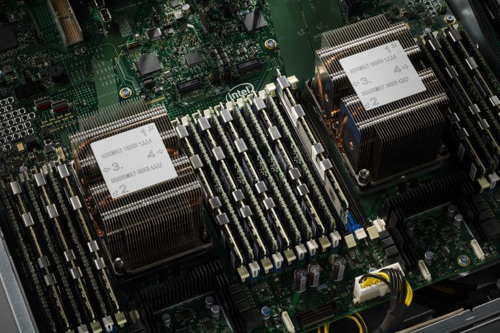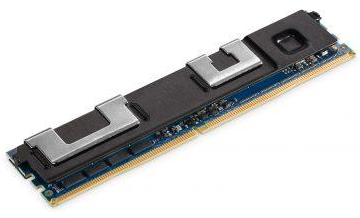Intel: Persistent Memory, Based on 3D XPoint, Gets First Public Demo
Expected to ship in 2018 with processor refresh of Xeon Scalable family platform, code-named Cascade Lake
This is a Press Release edited by StorageNewsletter.com on May 22, 2017 at 2:34 pmFrom Intel Corp.’ IT Peer Network
![]() Written by Mike Ferron-Jones, director, datacenter platform technology marketing, Intel
Written by Mike Ferron-Jones, director, datacenter platform technology marketing, Intel
For many applications running in today’s data centers, performance is impeded by I/O bottlenecks that slow the movement of data to and from the processor.

While IT leaders understand the problem well, the solution has been elusive. Ideally, they would put more data into memory to close the data-to-processor gap, but that hasn’t been a viable solution because memory has historically been small, volatile, and expensive.
Today, this story is about to change in dramatic ways, thanks to a new generation of Intel DIMMS coming next year from Intel that will make memory big, affordable, and persistent. This new generation of Intel persistent memory, based on the groundbreaking 3D XPoint media developed by Intel and Micron Technology, Inc., will enable data center operators and application developers to overcome a historical barrier to higher application capacity and performance.

Persistent memory will allow users to improve system performance dramatically by putting more data closer to the processor on nonvolatile media, and do it in an affordable manner. This will truly be a game-changer when it comes to the way applications and systems are designed. It’s a complete reversal of 50 years of the small, volatile, and expensive memory IT orthodoxy.
Intel persistent memory is in the spotlight this week at the SAP Sapphire conference in Orlando, FL, where Lisa Davis, VP, IT transformation, Intel, presented the first public demo of the technology. The demo shows SAP’s HANA in-memory data analytics platform working with persistent memory. It’s fitting that an SAP application should be showcased in the public debut of the new DIMMs because Intel and SAP have partnered on a persistent memory vision for many years, representing Intel’s commitment to delivering industry innovation and building upon the industry leading solution performance we continue to deliver to end customers today.
Big, affordable, persistent memory will be a game-changer for users of SAP HANA and other in-memory databases. More data in-memory equates to better, faster insights and more business velocity. And because data remains in-memory through power cycles, restart times are a fraction of the loading times from disk, for more HANA service uptime.
Of course, it’s not just in-memory databases that will reap the benefit of Intel persistent memory when it becomes available next year. The new DIMMs enable countless use cases across data center segments, from mass-scale virtualization and private clouds in the enterprise to, cloud hosting, and search offerings in public cloud environments. The new technology will also help accelerate the performance and capacity of HPC applications and software-defined storage. The list of potential use cases goes on and on.
So when can you get it?
Intel expects to ship its persistent memory solution in 2018 with a processor refresh of the Xeon Scalable family platform, code-named Cascade Lake.
And if you’re a developer who wants to get your application ready for Intel persistent memory, check out persistent memory programming and Under the Hood: Non-Volatile Memory Libraries (NVML) | Intel IT Center (video) for an Under the Hood look at the Non-Volatile Memory Libraries.












 Subscribe to our free daily newsletter
Subscribe to our free daily newsletter
